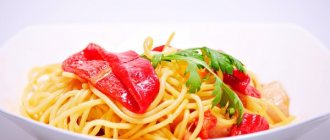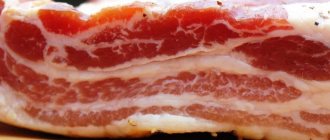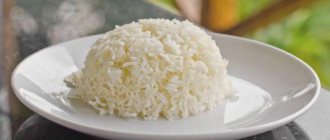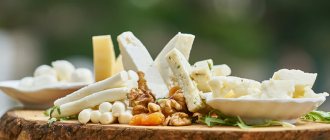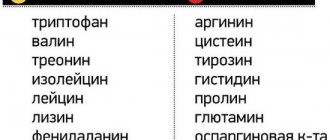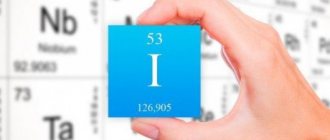Useful and useless
You've probably heard more than once that pasta made from durum wheat is not fattening and is suitable even for those who are on a diet (of course, if you do not add fatty cheeses, creamy sauces, etc. to your dishes).
But why? Their glycemic index is low - 55 units (for comparison: boiled potatoes - 65, corn - 70, beets - 64, brown rice - 65, carbonated drinks - 74, and beer - all 110). Article on the topic How to cook perfect pasta. 18 little tricks
What does this figure tell us? The carbohydrates in durum wheat are slow, that is, they are broken down gradually and supply our body with energy for a long time. A good pasta contains all the necessary vitamins and minerals: for example, B vitamins strengthen the nervous system, vitamin E preserves our youth, tryptophan helps get rid of depression and insomnia, fiber removes toxins. Don't forget about the body's invaluable helpers - potassium, iron and phosphorus.
The pleasant yellow color of such pasta does not come from eggs, as many people think. Real pasta is only two ingredients: purified water and durum wheat crushed into grains.
Good pasta, when you cook it, will not turn white, but will retain not only its pleasant sunny shade, but also its shape, even if you forget it on the stove and do not remove it at the time indicated on the package.
Pasta diet for weight loss
When losing weight, durum pasta can be included in the diet not only as an additional ingredient, but also as its main component. It is important to follow the rules of nutrition and remember that you should not expect rapid weight loss. Judging by the reviews, if you follow all the instructions, you can lose about 5 kg in a month. The dishes can be changed at your discretion: for example, for dinner you can cook not pasta with vegetables, but a casserole. An approximate pasta diet is described in detail in the table below:
| Diet day | Breakfast | Lunch | Dinner | Afternoon snack | Dinner |
| First | Coffee or tea without sugar, fruit. | A glass of grapefruit juice. | Boiled or grilled meat, stewed vegetables (spinach, chard). | A glass of citrus juice (lemon, grapefruit, orange). | Pasta with vegetables. |
| Second | A piece of dried bread, sugar-free marmalade, nettle tea. | A glass of fruit juice without sugar. | Steamed or oven-baked fish, boiled vegetables. | A glass of fruit juice without sugar. | Brown rice with zucchini, boiled vegetables. |
| Third | Fresh fruit, coffee or tea. | Fruit juice without sugar. | Steamed vegetables, a few slices of low-fat cheese. | A glass of fruit juice without sugar. | Pasta salad with raw or cooked vegetables. |
| Fourth | A piece of dried bread, sugar-free marmalade, nettle tea. | A glass of fruit juice without sugar. | Grilled pork (veal, lamb), boiled vegetables. | A glass of fruit juice without sugar. | Pasta with green peas, vegetables cooked in the oven. |
| Fifth | A cup of coffee or tea, raw fruit. | A glass of fruit juice without sugar. | Fish baked in the oven and foil, steamed vegetables. | A glass of fruit juice without sugar. | Noodle soup with legumes (peas, beans or lentils), baked vegetables. |
| Sixth | A piece of dried bread, sugar-free marmalade, nettle tea. | A glass of fruit juice without sugar. | Oven-baked meat (hare, turkey, chicken), boiled vegetables. | A glass of fruit juice without sugar. | Dietary pasta with bell pepper, steamed vegetables. |
| Seventh | A cup of coffee or tea, raw fruit. | A glass of fruit juice without sugar. | 2 hard-boiled eggs, baked vegetables. | A glass of fruit juice without sugar. | Vegetarian pizza of mushrooms and vegetables (slice), baked vegetables. |
What to eat with
100 g of product contains 30% of the daily requirement of vitamins, fats, proteins and carbohydrates. A diet that includes pasta can be beneficial for diabetes and cardiovascular diseases. So what can you eat pasta with if you want to lose weight? Only with low-calorie foods. Eating fatty sauces and dressings will ruin all your efforts. It is worth combining pasta with low-fat fermented milk products, lean meat, rice, cheese, and fish. Ideal ingredients include:
- broccoli;
- green pea;
- garlic clove;
- spinach;
- tomatoes;
- carrot;
- green string beans.
How to cook properly
To ensure that the product does not lose its beneficial properties and does not stick together to a pulp, you need to know how to prepare it correctly and in a dietary manner. Italians consider undercooked pasta to be the ideal state of readiness, otherwise it sounds like “al dente”. This means that they should be soft on the outside, but elastic on the inside. This state can be achieved by following the recipe below:
- The amount of water that needs to be poured into the pan is measured as follows: take 1 liter per 100 g.
- Place on medium heat and bring to a boil.
- When it boils, add a pinch of salt, a small amount of extra virgin olive oil and add the products.
- It is necessary to stir the pasta all the time, especially in the first 2-3 minutes.
- After 8 minutes, the dish is seasoned with herbs.
- How to activate an MTS SIM card
- How to paint eyebrows correctly with pencil, shadows or paint. Makeup and eyebrow tinting at home
- Richest man in the world 2017
Where is lift needed?
You can also make something resembling pasta from soft wheat (also called baking wheat). But they will not have any taste - after all, in fact, it is pressed flour. And there’s no need to talk about them retaining their color and shape after cooking.
Article on the topic
Pasta: varieties and methods of preparation. Infographics
Soft wheat varieties are no worse, they are just intended for something else. They are used to make bread and pastries. Without high-quality raw materials, the dough will not rise, and you cannot bake a good loaf. But when producing pasta, this lifting force is not needed. Therefore, it happens that an unscrupulous manufacturer, trying to attract a buyer with a low price, uses the lowest quality grain. Perhaps even fodder, which is usually used to feed livestock. By and large, such a product cannot even be called pasta. Nevertheless, pasta is also made from soft wheat, but it is higher in calories and less healthy. After all, it is precisely such horns or feathers that can cause excess weight and other metabolic disorders.
How to tell the difference?
Carefully read the ingredients and all labels on the package. Choose pasta made exclusively from durum wheat. If it says “Group A” on the package, it is durum wheat flour. This is exactly what should be on a pack of pasta. If you see the designation “Group B”, you have premium-grade wheat flour, it is good for bread and rolls, but not for spaghetti or fusilli. And in any case, avoid loose pasta in plastic bags without any identification marks. So make a meaningful choice in stores, bon appetit and have a thin waist!
By the way
In Italy, the homeland of pasta, back in the 60s of the last century, a law was passed prohibiting the production of pasta from soft wheat. There is no such law in Russia.
In a world where the average weight of the average person is steadily growing, they blame everything, of course, not on themselves, but on the products that are to blame for everything. Most often, people think that they gain weight from sugar, mayonnaise, flour, including pasta. And as soon as they stop eating sugar, mayonnaise and pasta, they will immediately lose weight.
Of course this is not true. You can easily gain weight without a drop of mayonnaise and without any sugar in your diet. And you can lose weight by also eating complex carbohydrates that are important for the body. Science has proven: there are no foods that only make you fat or make you thin!
LAW OF ENERGY BALANCE
It's all about the law of energy balance. It is too simple to believe, but it has been confirmed by dozens of scientific studies and has not yet been refuted.
After all, what is food? From the body's point of view, any food that enters is energy. They agreed to measure this energy in calories. 1 calorie is the energy required to heat 1 gram of water by 1 degree.
Different foods contain different amounts of energy.
For example, 100 grams of cucumbers contain only 15 kilocalories. That is, roughly speaking, the energy contained in 100 grams of cucumbers is enough to heat a liter of water by 15 degrees.
Energy doesn’t disappear anywhere—everything we eat, we have to spend. And if you ate a lot and spent poorly, then an excess of energy is formed, which the body is forced to store.
The most effective option is to store it as fat. Indeed, unlike carbohydrates and proteins, each gram of fat contains the most energy - as much as 9 calories.
If you ate 100 calories above your target every day for a week, you'd end up with a 700-calorie surplus, which, including water, would be stored as about 100 grams of fat.
And vice versa: if you eat 100 calories less than you burn, then in a week you will have a deficit of the same 700 kcal that the body will have to take from reserves - that is, burn those same 100 grams of fat.
By the way, people often do not understand how many and where exactly calories are contained. The same pasta itself is not so high in calories and, moreover, it is an important source of complex carbohydrates, which should consist of approximately half of the diet.
For example, Barilla durum wheat pasta with cod and broccoli can contain about 400 kcal per 400 gram serving. And the same amount of pasta with bacon and cream sauce already contains 2 times more calories - due to the higher calorie addition to the pasta itself.
HOW TO CHOOSE PASTA
By the way, for those who don’t know how to choose pasta. Please note that there are 3 groups of pasta: A, B and C.
But there are subtleties here too. Sometimes the packaging states “From durum wheat”, but at the same time “Group B” or “Group C” is indicated. This means that durum wheat was only partially included in the flour, but in what proportion is usually not indicated.
It is group A that guarantees that pasta made from durum wheat tastes better and contains, for example, less starch, which means it has a lower glycemic index. By the way, not only Barilla, but also all Italian pasta - only group A - others are prohibited from being produced in Italy.
And yes, the shape of the pasta - be it fusili, penne, spaghetti or rigate - does not affect the quality in any way. They are all equally good.
WEIGHT LOSS RATE
But let's return to the energy balance. We figured out that with a calorie deficit, you will lose weight one hundred percent.
Scientists consider it safe to lose up to 1% of body weight per week. That is, if you weigh 100 kg, then to lose 1 kg per week you need a deficit of 1000 calories per day and the body itself will replenish the missing energy from your fat reserves.
The most important thing is that it doesn’t matter what exactly you eat - the law of energy balance will work.
You can eat a big plate of pasta every day, wash it down with sweet tea and add a plate of dumplings with mayonnaise and still lose weight. Or you can overeat on “healthy” food and gain weight because you go over the calorie limit.
But in life, rarely does anyone count calories and it’s easy to go over your quota of fatty foods without even noticing.
Therefore, friends, feel free to eat your favorite foods, but before that, don’t be too lazy to find out your calorie allowance and at least once in your life, calculate your daily diet - are you exceeding your allowance and how can you reduce these calories.
Video on this topic:
